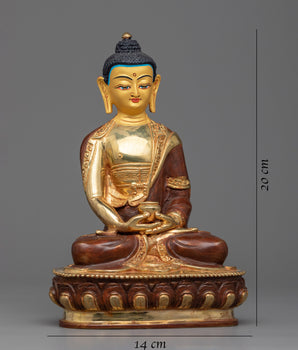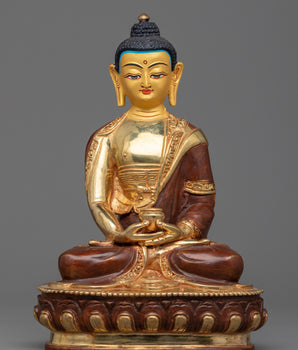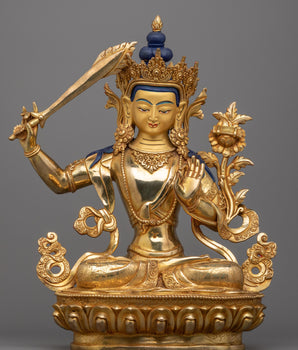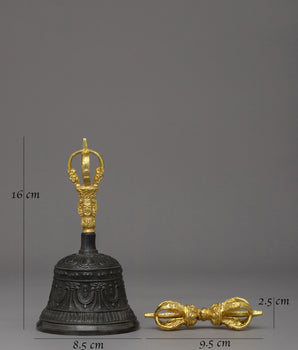











Tibetan Buddhist Icon Vajrasattva | The Great Purifier

100% AUTHENTIC

HANDMADE

FREE SHIPPING
Buddhist Icon Vajrasattva | Bodhisattva of Purification
-------------------------------------------
Size: 11”/28cm (Height) x 6.5”/16.5cm (Base)
Weight: 2.13 kg
Material: 24K Gold Gilded, Gold & Acrylic Paintings, Copper Body, Gemstones
-------------------------------------------
About our Statue:
This Buddhist Icon, Vajrasattva, known as a symbol of purity and wisdom, represents spiritual purification and the removal of obstacles on the path to enlightenment. This handcrafted statue, measuring 11" (Height) x 6.5" (Base) and weighing 2.13 kg, is made of Copper Body and adorned with gemstones and 24K gold gilding, as well as acrylic paint work. Crafted by expert Nepalese artisans, this sacred item embodies the rich traditions of Himalayan Buddhism, making it an important addition to altars, meditation areas, or sacred collections.
The Tibetan Buddhist Dorje Sempa, also known as Vajrasattva, is a revered deity associated with purification and spiritual cleansing. Depicted in a serene and meditative posture, he holds a vajra (thunderbolt) in his right hand, symbolizing wisdom and the ultimate truth. In his left hand, he gracefully holds a bell, representing the wisdom of emptiness and the union of compassion and insight. The vajra and bell together signify the inseparable nature of method and wisdom, fundamental to Buddhist teachings. This sacred representation serves as a reminder of inner transformation and spiritual awakening in the Buddhist tradition.
Introduction to Vajrasattva:
Vajrasattva is typically regarded as the second patriarch in the Shingon Buddhist lineage, the first being Vairocana Buddha. According to Kukai's writings in Record of the Dharma Transmission, Nagarjuna encountered Vajrasatva in an iron tower in southern India, based on Amoghavajra's testimony. As recounted in the Mahavairocana Sutra, Vajrasatva inducted Nagarjuna into the abhiseka ceremony and entrusted him with the esoteric teachings he had gained from Vairocana Buddha. Kukai doesn't go into detail on Vajrasatva or his beginnings.
How do you take care of your statues?
• Place them at room temperature, avoiding direct sunlight.
• Make sure that the area where your statue is placed is entirely free of moisture and dust.
• Place it at the highest place on your altar after being consecrated by a Lama/monks. The best practice is to keep them covered inside a
glass cabinet.
• Do not use your bare hands or any objects with a rough surface to wipe the face. Directly touching the face with the bare hand can
smudge the face, leaving scratches.scratches.






















